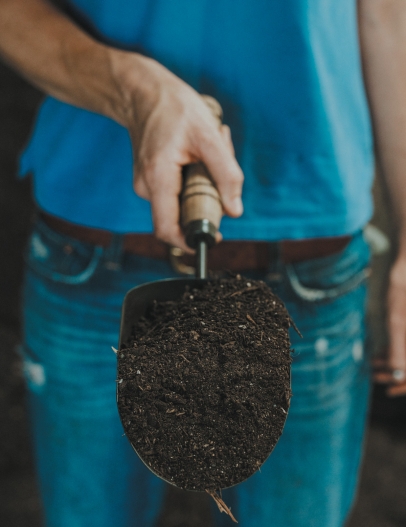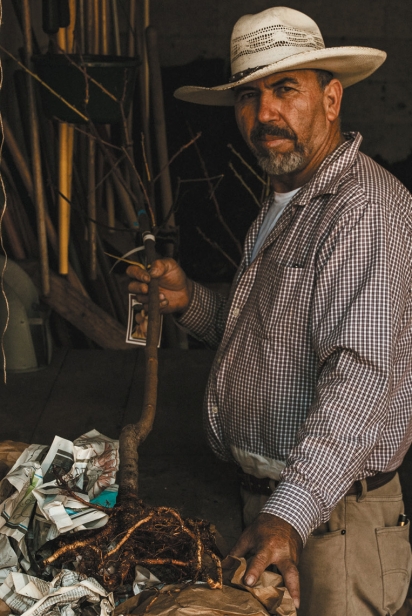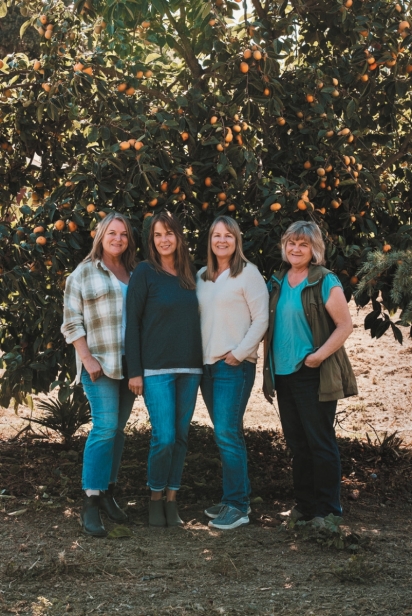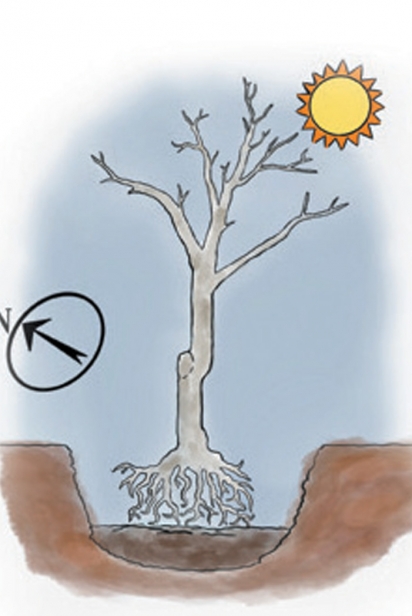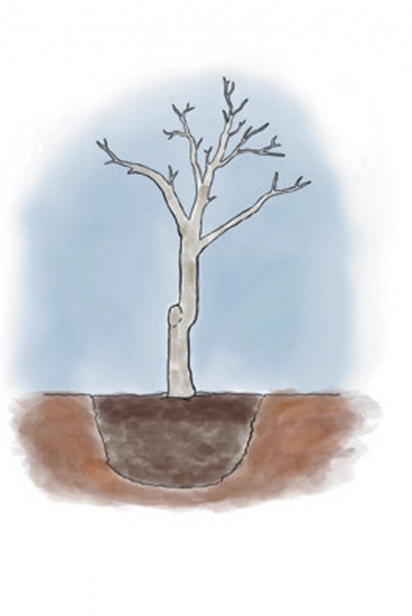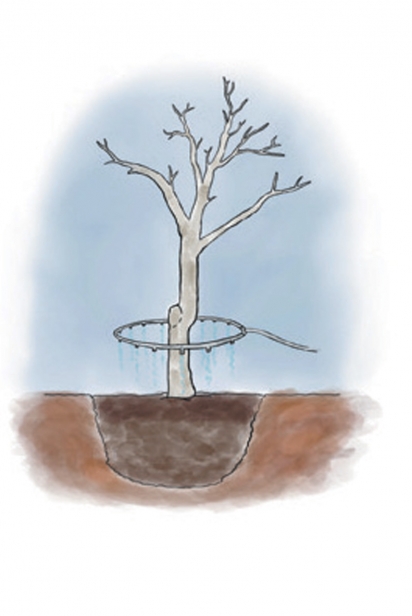Tips on Planting Bare-Root Fruit Trees
It’s always tempting to buy those lovely leafed-out fruit trees—nicely potted up, neat, clean and ready to plant. After all, we can see what the tree looks like and readily imagine its soon-to-be spreading branches. And, if we don’t get around to planting our tree immediately, it can happily live in its pot for a few weeks or more.
Bare-root fruit trees look no better than glorified sticks with roots. So why plant bare-root during the winter months when potted trees seem so much easier? No outfit is better equipped to answer that question than the folks at Van Winden’s Garden Center in Napa, who this year celebrate their 70th year in the nursery business.
When Peter Van Winden and his wife, Johanna, started their nursery in 1953, Napa Valley was still a relatively young ag community and Highway 29 a lonely two-lane country road. Four of the family’s six daughters now manage the family business, overseeing cultivation of much of the nursey stock (including their bare-root fruit trees) at the Van Windens’ five-acre Big Ranch just a few miles away.
Bare-root trees are packed into soil and compost bins at the nursery during the winter months, at the peak of their dormant season. When a tree is purchased, the staff separates it from the others, shakes off the dirt and wraps the tree roots in newspaper to take home.
Here’s what the Van Windens have to say about planting bareroot.
Why Bare-Root?
Bare-root fruit trees have an intact, spreading root system, with roots that have not been cut and cramped in a pot. This gives the tree the optimum conditions to establish the foundational root system that is essential for tree growth and health.
What Trees to Choose?
To bloom and set fruit, fruit trees need a certain number of chill hours per year, and that number of hours varies by variety. A chill hour is equal to each hour the fruit tree or plant spends at temperatures between 32° to 45°F each year. Coastal climates tend to have few chill hours; the town of Napa has 700–1,000 peer year, and climbing from the valley floor, upwards of 1,500 hours. Granny Smith apples, for example, need 400 chill hours, apricots even less.
Some fruit trees are more challenging than others due to pest and disease susceptibility. Apples are prone to coddling moth, and peach trees to leaf curl, for example. A quick chat with nursery staff will help you determine the best variety for your location.
THREE STEPS TO PLANTING BARE-ROOT
1. Find the Best Spot for Your Tree
Plant bare-root fruit trees in a sunny location, with the graft union facing north. Positioning the graft away from the sun helps to protect the trunk from burning, which can damage the tree and become a source of infection. Dig a hole as deep as the roots and twice as wide. Partially fill the hole with soil mix. Center the tree in the hole and spread out the roots over the soil.
2. Add Soil Mix & Mulch
Fill the hole with soil mix to about two inches above the highest root and tamp down. Water thoroughly, soaking the root area. Add a layer of 1-2 inches of mulch, if desired; it’s used to cover the ground surface, keep moisture in and prevent weeds from sprouting. Mulch can be purchased or sourced at home; leaves, grass clippings, straw and moss make good mulch.
3. Irrigate Properly
Proper irrigation is essential for a healthy tree. A common mistake is to set a mister or sprinkler at the base of the trunk. Since fruit trees do not have a tap root, this style of watering does not reach the roots. Instead, spread your misters or sprinklers to where the roots are, in an 18- to 36-inch radius. Soil should be damp, but not soggy.


